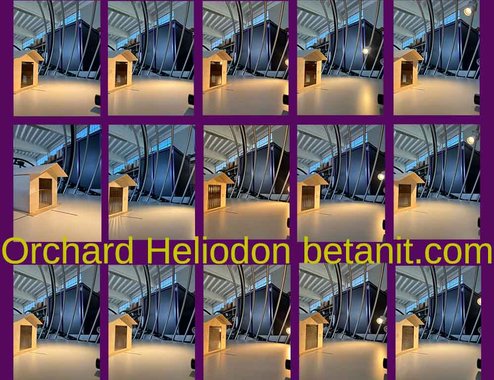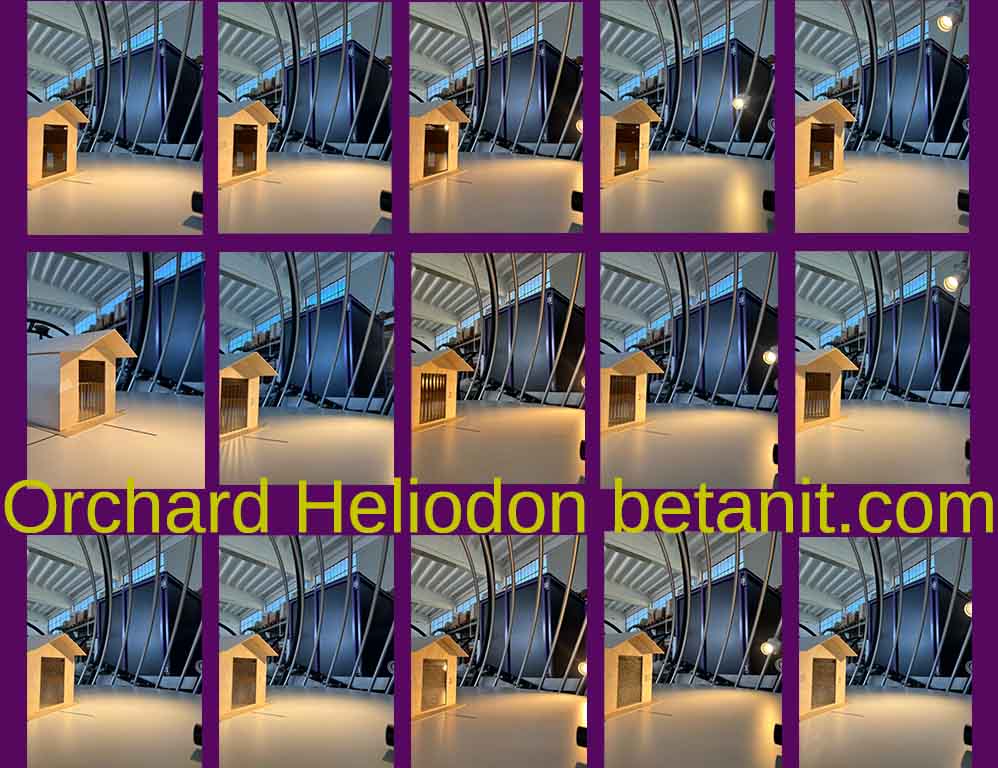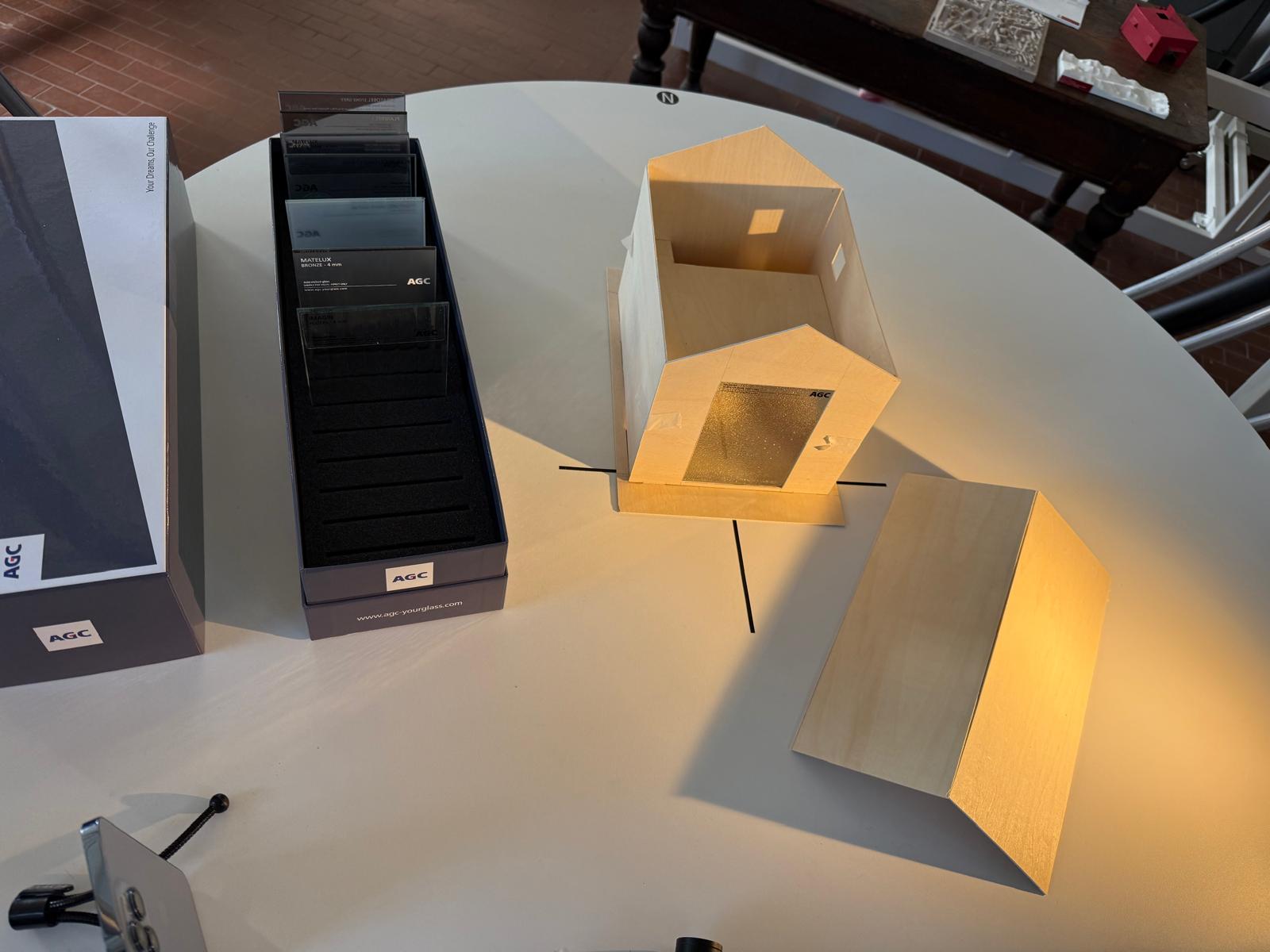Heliodon and Scale Models: Comparative Testing of Glass Performance

Introduction
Natural light is one of the most influential components in architectural design: it improves visual comfort, reduces energy consumption, and contributes to the occupants’ psychological and physical well-being.
For students, teachers, and researchers, understanding the impact of daylighting on buildings is essential.
Among the most effective tools for studying and analyzing natural light dynamics is the manual heliodon, which allows intuitive simulation of the sun’s movement throughout the year and observation of the interaction between solar radiation, openings (windows, glazed surfaces), façade cladding materials, and solar shading systems.
In this article, we demonstrate how to use a manual heliodon together with a scale model to compare the performance of different types of glass — an especially useful exercise for courses in architecture, engineering, and sustainability.
The Manual Heliodon
The manual heliodon is a mechanical tool that enables positioning of a scale model to replicate the incidence angle of sunlight for any given day and time of the year.
Betanit, manufacturer of heliodons and artificial skies, creates instruments designed to be intuitive and educational: rotating and tilting rings, the ability to simulate various latitudes, and stable surfaces that can support even large-scale models.
This hands-on approach helps students understand the relationships between solar geometry, building orientation, and form.
For more information about the Orchard device, visit the official website: https://www.betanit.com/orchard/.
Building the Scale Model
For accurate tests, it is recommended to build a 1:20 or 1:50 scale model.
Practical tips:
- Walls and roofs: use rigid materials, as realistic as possible in terms of material and color compared to those intended for the final project.
- Glazed façades: design removable elements to easily replace glass panels and compare several glass types.
- Precision: maintain strict scale for openings and wall thickness to achieve credible results.
Variables to Test
The goal is to compare the performance of different types of glass under realistic simulated lighting conditions.
Various glass types can be tested. Sample pieces (typically 10×15 cm or 20×30 cm) can be requested or purchased online, for instance from www.agc-store.com.
It is also possible to add shading systems — such as brise-soleil, internal blinds, or 3D-printed elements — to evaluate different glass + shading combinations.
Testing Procedure
- Positioning: place the model on the heliodon, set the site latitude and the date of interest (e.g., summer solstice, equinox).
- Observation: observe light distribution inside the rooms and document it with photos or videos.
- Glass replacement: switch transparent façades and repeat the test for each glass type.
- Measurements: if possible, use lux meters to collect quantitative data.
Analysis and Comparison
After running the tests:
- Compare light quantity (average illuminance) and quality (glare, uniformity).
- Note differences between solutions, considering visual comfort and potential cooling load reduction.
- Present results in a comparative format, useful for class discussions, reports, or theses.
Case Studies and Research
Interesting examples come from Latin America: the Bioenvironmental Laboratories of Universidad Ricardo Palma (URP) in Peru use heliodons to study façade solutions and teach future architects the use of natural light.
Collaborations with glass producers such as Saint-Gobain have enabled testing of various glass types and coatings, providing valuable data for sustainable design.
Educational Value
This exercise is highly effective because it allows students to:
- Connect theory (solar diagrams, daylight factor) with real experience.
- Develop design sensitivity toward natural light.
- Understand the effects of façade materials and technologies.
- Gain direct experience with building materials and their application.
- Engage with manufacturers to explore available material options.
Conclusion
Integrating the manual heliodon into design courses helps form designers who are more aware of the impact of natural light.
Comparing different glass types on a physical model is not only a scientific experiment but also a way to enhance architectural quality and building sustainability.
Tip for students and researchers: document your experiments and share them in academic and professional contexts.
If you would like to share them with us, send them to info@betanit.com, using the subject line “My Heliodon Test”.
We would be delighted to create an open-source database of case studies that could become a useful reference for the international architecture and engineering community.
Media
-
 test on three different types of glass
(84.9 KB).
test on three different types of glass
(84.9 KB).
-
 glass test on Orchard Heliodon
(116.2 KB).
glass test on Orchard Heliodon
(116.2 KB).
-
 glass sample and scale model in Orchard Heliodon
(290.8 KB).
glass sample and scale model in Orchard Heliodon
(290.8 KB).
Contact
betanit.com
Phone: +39 0523 650217
email: info@betanit.com